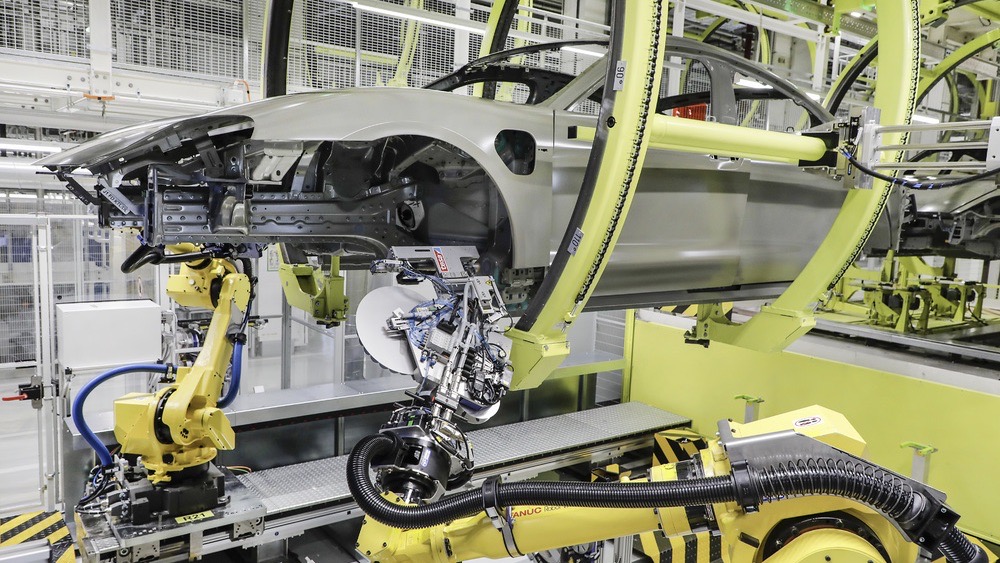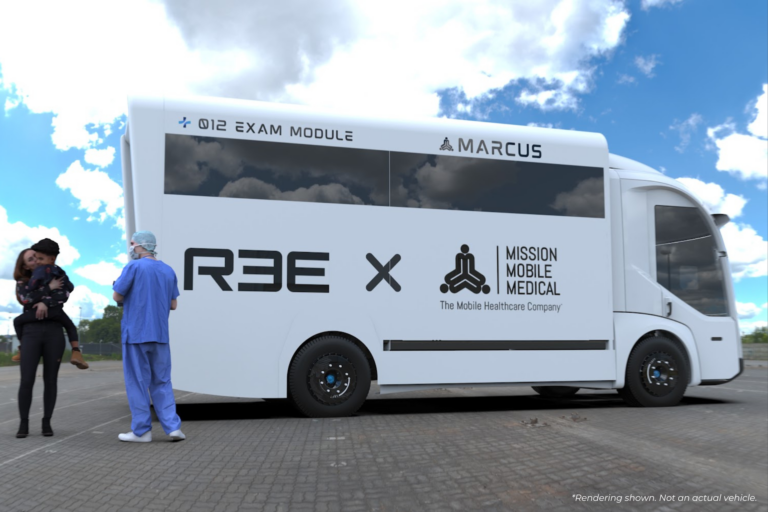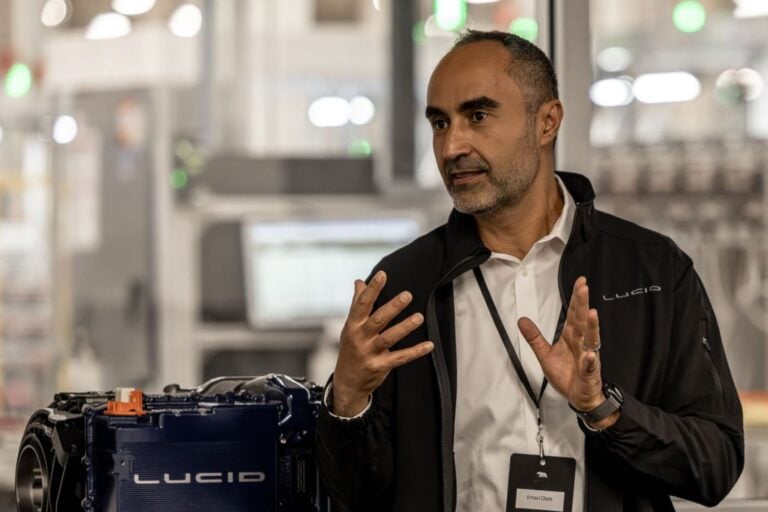Innovation reduces strain on employees and increases product quality
Stuttgart – Porsche AG has developed a new production process at its headquarters in Zuffenhausen in collaboration with Tesa SE. Using this process, the holes in the car body, which are necessary for corrosion prevention, can now be sealed much more effectively; these holes are required so that all of the body cavities can be accessed in the paint shop. The innovative solution: sealing patches instead of plastic plugs. The all-electric Porsche Taycan is the first car in the world to use this new process. A robot places more than 100 sealing patches automatically, quickly, and reliably, thereby sealing the holes in the body and optimizing efficiency in Porsche production.
“Innovation has always been the driver of our commercial success,” says Albrecht Reimold, Member of the Executive Board responsible for Production and Logistics at Porsche AG. “New innovations have to be mastered. This requires courage and creative freedom. It is management’s role to ensure that this atmosphere is fostered in the day-to-day operations of the company.” Porsche Innovation Management saw to the adoption of the sealing patches, and by July 2020 more than two thirds of the approximately 150 plugs in the Taycan paint shop had been eliminated. The paint shop at the Leipzig plant will also make the switch by summer 2021.
“It’s important not to confuse our adhesive solution with Tesa tape, which everyone knows from their office supplies,” explains Dirk Paffe, who is responsible for the implementation of innovations as Head of Planning for Paint Shop Processes. “Once the special Tesa sealing patches have been applied, they can only be detached again with a great deal of effort. They provide a durable solution that can also withstand the stresses caused by the motion of the vehicle, and last longer than the lifetime of the vehicle.”
You Might Also Like: Porsche Extends the Taycan Model Range
Above all, this innovative solution relieves considerable strain on employees: the adoption of the Tesa patches has eliminated a strenuous process step whereby up to 3,600 plugs per shift had to be pushed into the holes. This process also involved overhead work. In addition, the new patches offer logistical advantages and reduce complexity, since one patch size can be used to cover all four-hole types. Moreover, with a thickness of just one millimeter, the patches barely protrude at all, whereas the plugs extend up to six millimeters outwards from the body. The patches are reliably positioned by a special robot.
“At Tesa, we incorporated more than 20 years experience in the manual adhesion of sealing patches in assembly to the development of the Tesa applicator for automated hole sealing,” explains Dr. Ute Ellringmann, Market Segment Manager responsible for hole sealing at Tesa. “We can therefore ensure perfect application of our sealing patches for maximum quality and process efficiency.”
Porsche Innovation Management
A key criterion for good ideas at Porsche is the company’s future viability. With that objective, Porsche Innovation Management was set up in 2016. The agile project team actively seeks out new developments, provides funding for them and puts them to the test internally at an early stage. This goes far beyond the transfer of knowledge from racing to series production. Driving innovation is a principle that is firmly anchored in Porsche’s Strategy 2030, and is seen as a cross-cutting issue: across all departments and subsidiaries in Germany and abroad. In addition to topics relating to production and development, Innovation Management also deals with major cutting-edge issues: the transition to electric mobility, sustainable mobility solutions, and the impact of digitalization on companies, customers, and products. An idea that has the potential to become an innovation at Porsche must in principle meet three criteria: it must be original and unique, it must benefit the customer, and it must add real value to the company. Funding is provided for 80 to 100 projects per year, with around 70 percent of these ultimately reaching the development phase.








